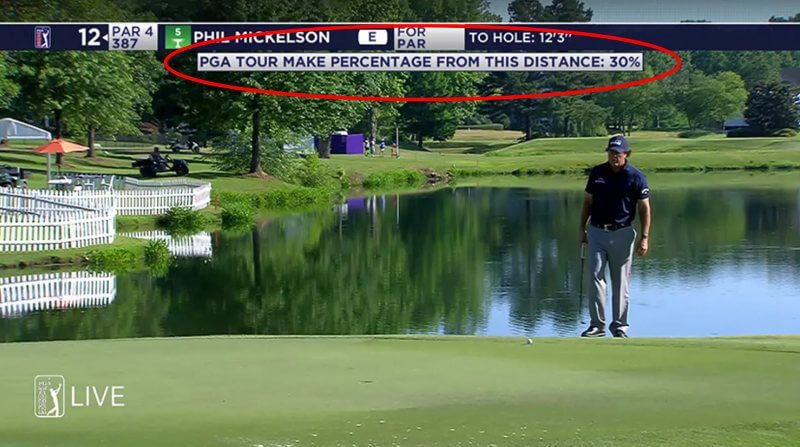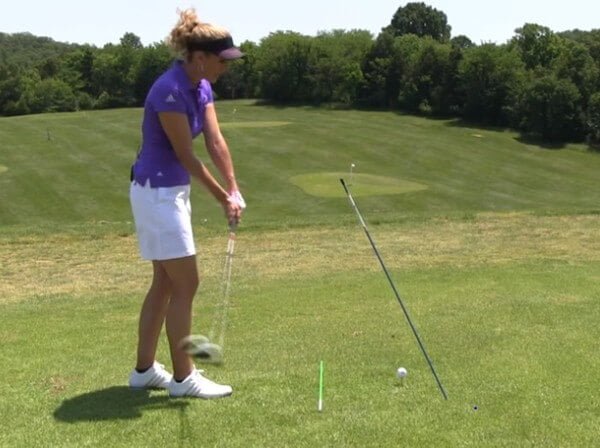Floating Chipping Greens – Top Pool or Lake Floating Golf Greens
Are you looking for an innovative way to practice your golf game this summer? Why not try a floating chipping green? Floating chipping greens are

Without numbers, we do not have sports. How many holes comprise a round of golf? What was the score, how many strokes? How many yards to the pin? How hard should you swing a golf club? Numbers define sports and give us measurable success, and measurable failure, such as FIR in golf.
Statistics have become an integral part of the sports identity over the past few decades. Back in the 1960s, the first statistics-based boardgame for baseball came out on the market and introduced the idea that we can analyze historical data to predict the future. Since then, fantasy betting, actuary professions, and team strategies have evolved to an ever-perfecting science. You’d be hard-pressed to watch a game nowadays that doesn’t mention such granular details of an athlete’s performance: Morikawa’s make percentage of putts inside 15 feet, Schauffele’s likelihood to win a playoff given his past matchups or McIlroy’s driving distance for the season and how that has put him in (or out of) contention.

Indeed, the game of golf is no different when it comes to the accessibility of such number-crunching. ‘FIR’ is a key figure that is tracked for players of all levels. An acronym for ‘fairways in regulation,’ this stat counts the number of times during the round that a golfer’s tee shot lands in the fairway. For example, on a par-72 course (with four holes being par 3s), a player would have a total of fourteen opportunities to stripe it down the middle. If the player hits ten fairways for the day, his FIR is 10/14, or 71%.
FIRs essentially measure how often you can put yourself in position off the tee. The PGA Tour average for driving accuracy over the past few years hovers around 60%. As we reach the tail end of the season, the average winnings for the top 10 players in this category (whose leader, Ryan Armour, averages 73.95%) are $948,287.
We all know that putting is the breadwinner in competition, but it certainly helps to take the pressure off one’s shortgame by being able to position the ball consistently. How many times have you watched one of the pros hook or slice a drive off line into the trees, forcing a punchout? Or maybe they find that one precarious pot bunker right in their landing zone that ruins any chance of a birdie opportunity? Becoming more consistent across all aspects of the game is a surefire way to bring down your handicap. Learn how to calculate your golf handicap here.
It’s easy to incorporate stat tracking into your rounds. If you already jot down your score each hole, this is a quick extra step that can help spike out weaknesses and strengths.
This stats book from LongBombs Golf is one of many golf journals on the market that can help organize the details of a round. Not only is there space to check off fairways hit in regulation, but you can also keep a record of putts per hole and ‘GIR’ (more on what is a GIR in golf here). Write in your numbers each hole and tally them up at the end of your round. For driving accuracy goals, aim for at least 60% of fairways hit
Log a couple of rounds to collect an historical view of your performance. If FIRs are under that 60% goal, you can head back to the range to put in some work. When I played Division I collegiate tournaments, it was routine for athletes to keep a separate stat sheet which they would submit to their coaches at the conclusion of the round. This kept an eye on areas for improvement. You can also check out our best golf stat books here.
Let’s start with the cons. First, FIRs don’t take into account driving distance. Two players could average 230 yards and 330 yards off the tee, yet the latter’s advantage is not reflected in the FIR statistic.
Also, with FIRs, even if you miss the fairway by a yard yet still have a playable lie in the first cut, it doesn’t count as a successful fairway hit in regulation. As such, this statistic could become arbitrary if you tend to only miss the fairway by a few yards here and there. Still, I was once told, “aim small, miss small” and I feel it’s a successful golf mindset to have. By visualizing tighter landing zones, it helps take larger problem areas out of play. For instance, if you are focusing on a 10-yard-wide span down the left-center of the fairway, your mind is less likely to worry about the water hazard up the right side. It doesn’t hurt to tighten up those teeshots!
The biggest pro to this stat is the knowledge it provides, and knowledge is power. Educated decisions are backed by research, data and analysis (we’ve even seen new age golfers like DeChambeau who makes the course his own eighteen-hole hypothesis). By establishing a base and combing through your numbers, it gives a starting point for where to focus your energy next.
There are multiple drills you can try on the range to help boost driving accuracy:
1) Headcover Under the Arm
Place a headcover or towel under your trailing arm (so if you’re a righty, under your left armpit. Lefty, vice versa). Make your takeaway swing without letting the object fall. Rehearse this ten times for every one shot of hitting the ball. This will train keeping your upper body together for a unified takeaway.
2) Alignment Stick Drill
Take off those golf alignment stick covers, this is not a drill! Stick an alignment stick in the ground at a 65 degree angle. It should be about a yard back in your stance and slightly ahead of your golf ball. On both your takeaway and downswing, your driver should come under the stick. You can practice this slowly to get the feel for it before trying regular speed swings. This helps prevent coming over-the-top on the downswing for more consistent swings.

In addition to off-course work, gaining experience in course management is huge for playing at that next level and breaking 80. Find out what percent of golfers break 80 here. Once you get to the teebox, work from the green backwards (if you’re familiar with the course this may be visualization, or you can lean on the pro shop’s yardage book). What this means is to think through where the pin is located, how far back and from what angle you want your approach shot to be hit from, what hazards might come into play, and then finally pinpoint your landing zone from the tee.
This calculated playing helps eliminate stressors of the course – bunkers, penalty areas and blocked approach shots that can easily rack up strokes – even if it means keeping the driver in the bag in lieu of a fairway wood or iron. By playing purposeful golf and aiming for the safest parts of the fairway, you can check off those FIRs while being in contention for more pars and birdies.
You can never have too much information when it comes to golf. Making educated decisions to drive focus during range sessions, course management calls and conversations at your next lesson stems from knowledge. Incorporate the FIRs stat during your next few rounds and let us know your stats. And as always, hit those bombs long and straight!
Categories
Are you looking for an innovative way to practice your golf game this summer? Why not try a floating chipping green? Floating chipping greens are
How I got on hole 16 (The Stadium hole) at the Waste Management Phoenix Open with little to no wait!! I also have tips and tricks on what to do once you are inside the gate and inside the stadium hole. Check this out if you ever plan to make a trip out! If you ever have the chance, it is definitely worth the trip.